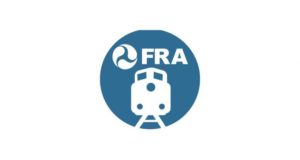TransLink’s Statutory Annual Report tracks accomplishments
Written by jroodBritish Columbia's TransLink delivered significant, promised expansion in road and transit infrastructure and services in 2009 to Metro Vancouver, while also dealing with softer revenues to successfully reduce the size of its forecast deficit. Metro Vancouver's transportation authority prioritized, ensuring that services and efficiency worked together to produce value-for-money for customers and taxpayers.
"The South Coast British
Columbia Transportation Authority’s 2009 Statutory Annual Report is a look back
at the wide ranging opportunities and challenges that we have faced this past
year," says TransLink CEO Ian Jarvis. "The public can see just how much has
been accomplished with their fares and tax dollars. While many initiatives have
been executed and many goals have been reached, conversely, they will also see
there is much work still to be done in order to build a sustainable and
integrated transportation network throughout the region".
TransLink was able to
implement many of the initiatives found in the inaugural year of its Ten Year
Plan, a ‘base plan’ that relied only on its existing revenues and financial
surplus and, in the process, met the legislated requirements of the South Coast
British Columbia Transportation Authority Act. The organization fulfilled most
of its capital plan projects and service expansion, taking delivery of new
buses, SkyTrain cars and a new SeaBus that it ordered for the region in the
late stages of its 2005 – 2008 Strategic Transportation Plan.
The openings of the
Golden Ears Bridge in June and the Canada Line in August marked the completion
(ahead of schedule) of the two biggest capital projects in TransLink’s history.
The addition of 48 new SkyTrain vehicles, the building and launch of a third
SeaBus and the addition of 92,000 bus service hours added significant capacity
and convenience for transit passengers and were important contributors to
TransLink’s success during the Winter Olympic Games. SkyTrain’s Broadway
Station was the first of the original Expo Line stations to be upgraded and
other station-improvement projects are in their design stages.
While expansion continued
in the first half of 2009, caution was exercised in the latter half of the
year, as planned transit expansion was put on hold to reduce the growing
pressure on TransLink’s financial reserves.
Following on its
efficiency and cost control successes in 2008, TransLink continued to closely
manage projects and tighten up on discretionary spending. Containing those
costs trimmed a forecasted budget deficit of over C$103 million by a third, to
just under C$68 million for the 2009 financial year end.
One of the most
significant accomplishments in 2009 was the Mayors’ Council approval in October
of a C$130-million funding ‘supplement,’ This additional revenue for 2010 left
TransLink better able to maintain existing transit services and sustain its
funding support for road infrastructure.
The result of all these
actions ensured that the existing transportation system is well maintained and
closer to being stabilized, although TransLink has budgeted a further draw on
its financial reserves in 2010.
"The last five years has
seen TransLink deliver significant expansion in a bid to help Metro Vancouver address
the pressure of a burgeoning population that needed more services," says
Jarvis. "By the end of 2009, we brought the system closer to financial
sustainability, but there’s still a requirement to draw on our reserves in
2010, and that maintains the urgency to find further efficiencies and improve
transit service productivity. At the same time, we want to build on transit’s
customer service accomplishments during the Olympics. I also want to
acknowledge here that the Commissioner’s review of TransLink’s operations, and
his comments on our organization’s performance, has formed an integral
component of the accountability processes and practices that guide us now, and
as we go forward with our work."
• Transit Service Hours
and ridership were both within one percent of plan. Higher service levels
throughout the Frequent Transit Network (bus services running with at least 15
minute frequency 15 hours daily) delivered 5.95 million hours of service in
2009. The number of revenue transit riders across the system rose over the same
period to nearly C$188 million from C$180 million.
• Bus and rail operating
costs were lower than forecast. Rail operating costs per kilometer were also
substantially lower, from C$2.88 to C$2.71.
• The Canada Line
started service on August 11, 2009, more than three months ahead of schedule,
and opened to the public on August 17th with full bus integration starting on
September 7. The bike and pedestrian bridge opened on August 14. Canada Line
trains are operating at 3.75-minute ‘headways’ from downtown Vancouver to
Bridgeport and at 7.5-minute headways on the two legs from Bridgeport to
Richmond and YVR. More frequent service will be scheduled on the Richmond and
YVR legs in two years.
• To provide for more
capacity, Expo Line operating changes were implemented in 2009 to provide for
longer trains.
• The UBC Line Study and
Surrey Rapid Transit Study were both initiated in 2009 to evaluate rapid
transit technology and alignment alternatives in specific corridors.
Stakeholder and broader public consultation are underway in 2010 for both
studies. The technologies under consideration include Bus Rapid Transit, Light
Rail Transit and Rail Rapid Transit.
The South Coast British
Columbia Transportation Authority’s 2009 Statutory Annual Report is available
online.





